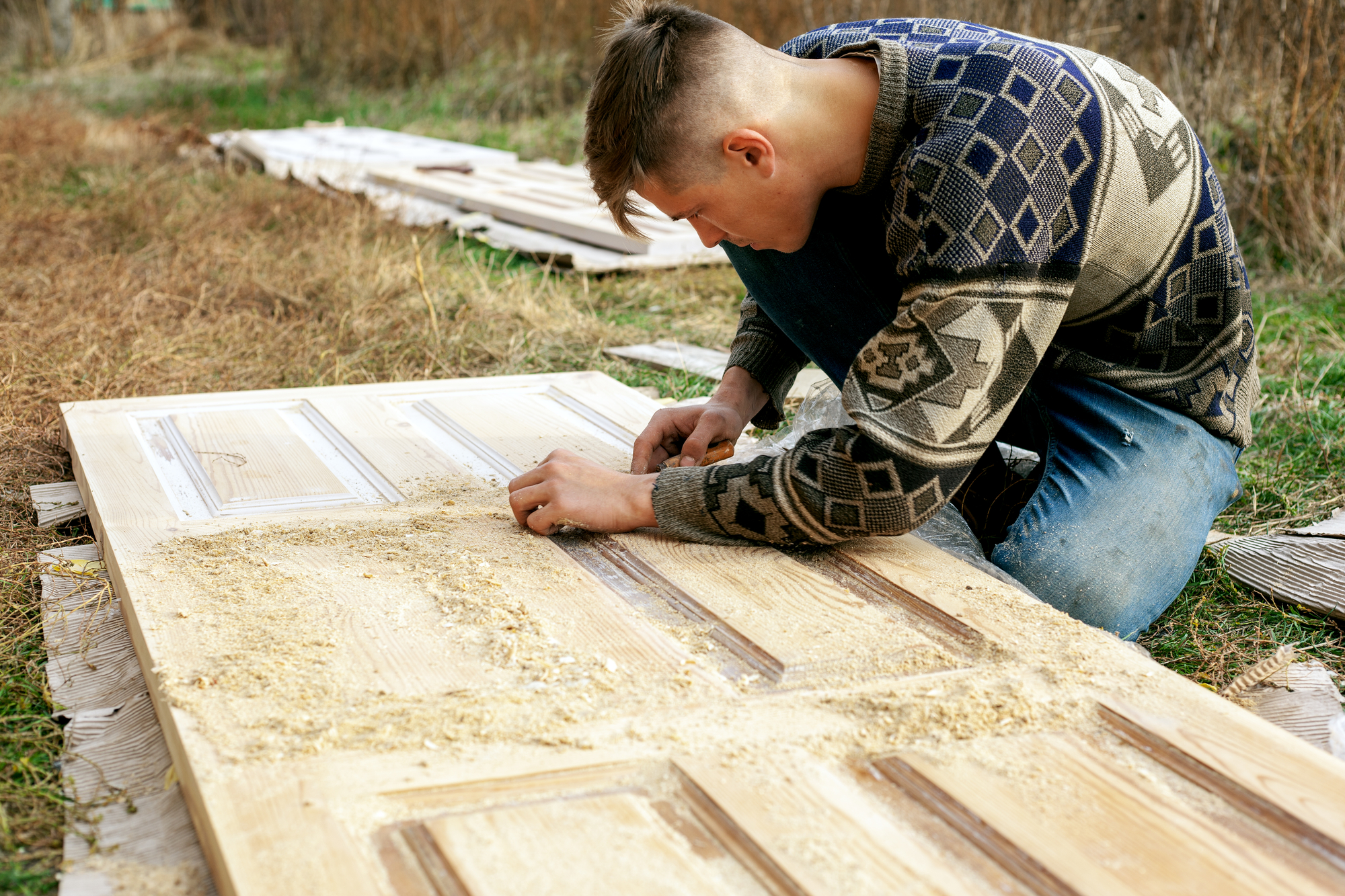
Old, worn-out doors can be an eyesore, with peeling and sun damaged paint diminishing the visual appeal of your home. They also present operational issues, especially when dealing with painted-over hardware that’s prone to sticking. An old door can be a problem, and that problem presents two possible solutions: replacing your door with a brand new slab and hardware, or rehabilitating your existing slab and hardware.
At ETO doors, we’re more than happy to supply brand new wood slabs at competitive prices and in a variety of species and styles, but we also want to make sure our customers are informed enough to make the right decision. If you’re thinking it might be best to give your old door a makeover, there’s only one place to start, and that’s removing all that old paint.
Necessary Materials
To avoid damaging your wood door slab, it’s important to follow procedure when removing paint. You might already have a few of the tools and materials you’ll need for this job, but these are the ones you’ll probably have to source:
- Solvent-based paint stripper
- Mineral spirits
- Respirator
- Paint scraper
- Pull scraper
- Orbital sander (optional)
IMPORTANT – A respirator is not optional here. Inhaling fumes from paint stripper is hazardous to your health, and depending on its age, your door slab may have one or more coats of lead paint in store for you, which can create airborne particles upon removal. Wear a respirator, and do all work in a well-ventilated or outdoor location.
Steps for Removing Paint From Your Door
- Remove your door from its frame. With the help of a partner, unscrew the bottom hinges from the frame first, and then work your way up. Then remove all hardware from the door. Move slowly and intentionally to avoid straining and stripping old wood. You should be left with only the slab, no hinges, door knob, or other additions. If you have a windowed slab, thoroughly cover all glass with masking tape.
- Lay the door slab on two raised supports. Ideally, two sawhorses will be best, but cinder blocks or other solid supports should also work.
- Fill a plastic bucket or empty paint can with your solvent-based paint stripper. Most solvent-based strippers contain dangerous chemicals that readily convert to vapor and are otherwise harmful to your skin, so don your respirator, as well as goggles, gloves, and protective clothing. Try not to leave any skin exposed where you might come into contact with paint stripper.
- Use an old paintbrush to generously coat the upward facing surface of the door with stripper. Let the stripper do its work; this should take at least 15 minutes. Once the paint starts to soften up, grab your paint scraper and start scraping. To avoid damaging the wood, don’t use a lot of force. Focus on removing the paint that comes off easily. Put your paint scrapings on a sheet of newspaper or in a paper bag.
- Repeat the previous step to remove most of the remaining paint. If done correctly, you’ll have a wood door slab with some residual paint or staining on its planes, and probably some paint buildup outlining any raised areas or details like molding.
- Apply stripper to areas of high paint concentration along the edges of raised details. For this, use a wire brush if you have one. Be careful not to scratch the wood with the wire brush. If you mix the stripper with the paint thoroughly enough, you’ll notice it coming loose and sticking to your brush. Use mineral spirit to clean the brush periodically.
- Paint stripper contributes to wood discoloration. Now that you’ve removed the paint from your door, it’s time to neutralize the leftover paint stripper. Take a rag and soak it with mineral spirits. Wipe down the door until it is washed of residual stripper and you can only see bare wood.
- There will most likely be some small remnants of paint at the end of this procedure. These should be scraped off with a pull scraper.
- Repeat steps 4, 5, 6, 7, and 8 for the other side of your sab.
- (Optional step) Once all paint has been totally removed, it’s time to do some sanding. While this isn’t necessary for the removal of paint – indeed, all paint should be completely removed before sanding, to avoid the risk of airborne lead particles – it will have to be done at some point if the door is to be repainted or stained.
Restoring Old Hardware
In many cases, you’ll be faced with door hardware that has its share of old paint. Depending on the age of the door and hardware, and the style of hardware, it may be best to get rid of old hinges and doorknobs instead of restoring them. ETO is happy to provide hardware for most applications and to suit any style requirements.
However, if you’re attached to your old hardware, removing the paint isn’t nearly as involved a process as removing paint from a door slab. One of the best ways to do it is to disassemble it and let it bathe in a pot of near-boiling water and baking soda for a few hours. The paint should come off easily after this with a little steel wool. Unless they are in extremely poor condition, it’s best to use the same screws that were used originally to secure the hardware to the door, and the door to its frame, to avoid stressing out the wood boreholes.


